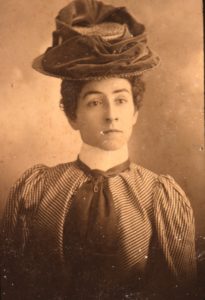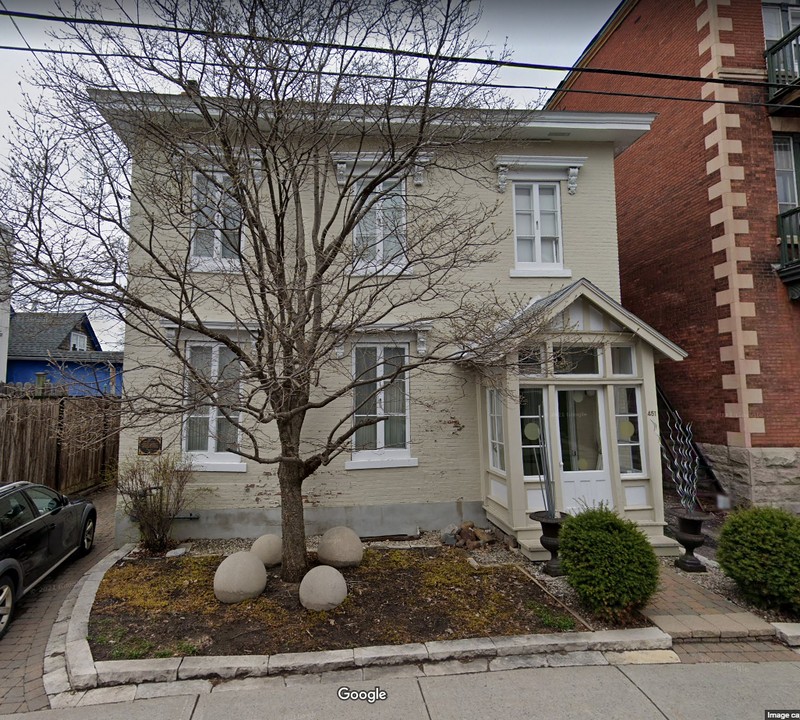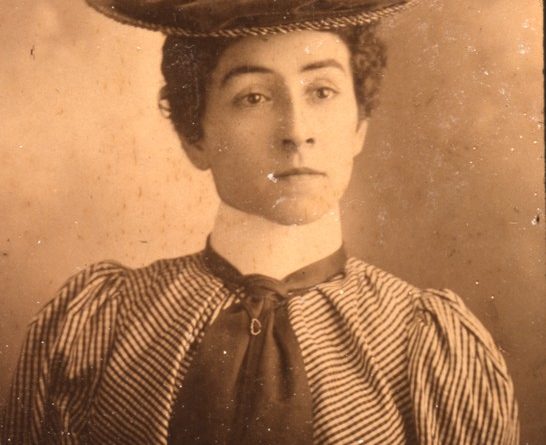One Besserer Street home and its early 20th century occupants
Sarah Carter

University of Winnipeg Archives, Western Canada Pictorial Index. Nora Hiam Collection (A0633-19590)
Amelia McLean Paget (1867-1922) lived at 451 Besserer St. from 1899 until her death in 1922. She was best known as the author of The People of the Plains (1909) about the nehiyawak (Plains Cree) and Saulteaux (Plains Anishinaabe / Ojibwe) of Treaty Four in southeastern Saskatchewan. McLean Paget was well acquainted with them, spoke their languages fluently, and researched her book through a three-month field trip and interviews with Elders in 1906.
Amelia was born at Fort Simpson in the Northwest Territories and was raised at Hudson’s Bay Company (HBC) trading posts including Fort Qu’Appelle. She was the eldest of 12 children born to W.J. and Helen McLean.
Helen’s great-grandmother was an Indigenous woman and Amelia had a vast network of fur-trade relations with Indigenous ancestry. She also had deep roots in the Red River Settlement (Winnipeg) where she attended the Anglican St. John’s College Ladies School.
From the age of 19, Amelia and her family lived at Lower Fort Garry where her father oversaw the Lake Winnipeg district for the HBC. While here, Amelia worked occasionally for the Department of Indian Affairs (DIA) as a translator. Her language skills were highly valued. While McLean family children did not identify as Métis, Amelia and other siblings applied for and received Métis scrip, a Canadian government-issued document that could be redeemed for land or money. Amelia was awarded $240 in 1894 after detailing her Métis ancestry.
The McLeans, including Amelia, were briefly national celebrities in 1885 when they were stationed at Fort Pitt during the resistance and spent two months with the nehiyawak leader Mistahimaskwa (Big Bear) and the Plains and Woods Cree who were trying to avoid the Northwest Field Force. Amelia was singled out by the press in June 1885 as “plucky enough for a life guardsman” as saying about her months with the moving camp that “she would not have believed the endurance they all manifested possible, but now looks back at most of it with enjoyment.”
In 1899, Amelia married Frederick H. Paget, who that year was appointed chief accountant of the DIA and was transferred from the Winnipeg office to Ottawa. They settled at 451 Besserer St., built in 1867 by plasterer William Beattie. The building is now a designated heritage property with elaborate interior plasterwork. She gave birth to a daughter, Helen, in 1901.
It’s at this Sandy Hill property where Amelia completed The People of the Plains, a positive portrait of Indigenous peoples that defied negative stereotypes of that time and beyond.
In the book, she directly challenged negative representations of Indigenous women, portraying them as knowledgeable, industrious, creative, and as outstandingly attentive mothers. The book conveys a wealth of information on the history and culture of Treaty Four Peoples.
Amelia died in Ottawa in 1922 and she is buried in Winnipeg.

The McLean family’s two months with Big Bear’s group during the North-West Resistance is described in The Circle Broken, Manor Park resident Judith Lishman’s poignant historical novel of this tragic time. The book is available at Books on Beechwood.
Sarah Carter is Professor and Henry Marshall Tory Chair Emerita at the University of Alberta, Department of History, Classics and Religion, and Faculty of Native Studies. She wrote the fascinating introduction to the reprint edition (2004) of The People of the Plains which is available in the Ottawa Public library.
